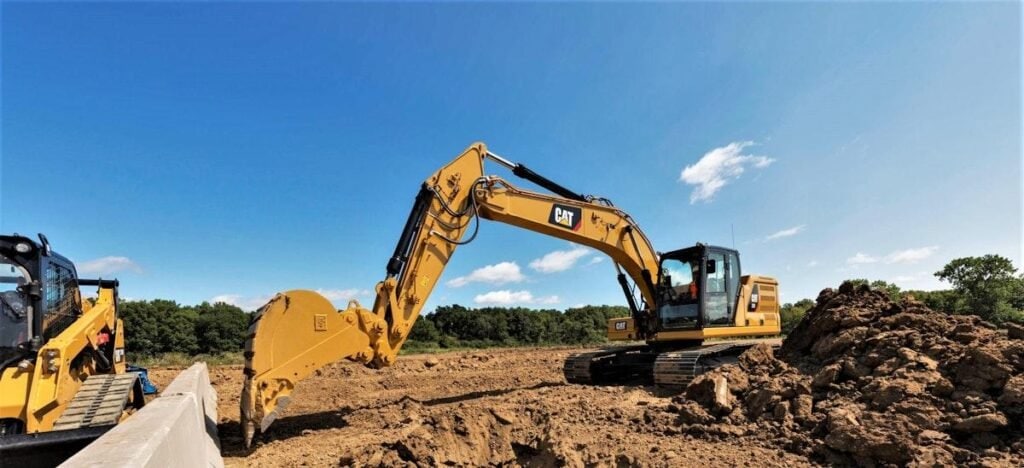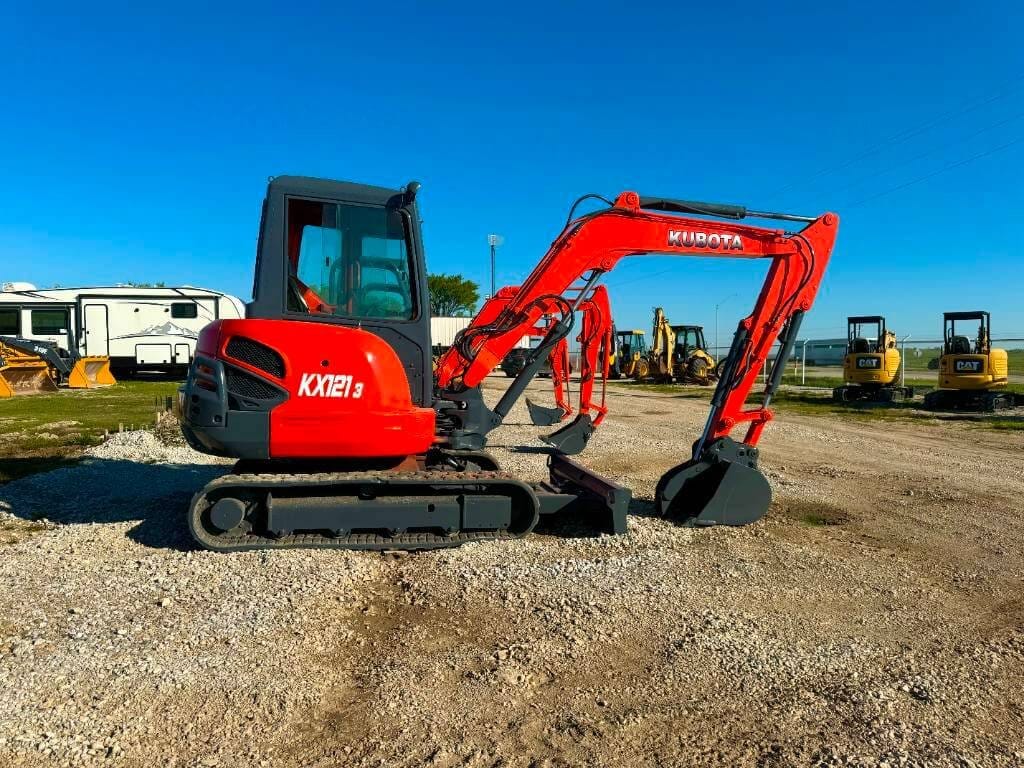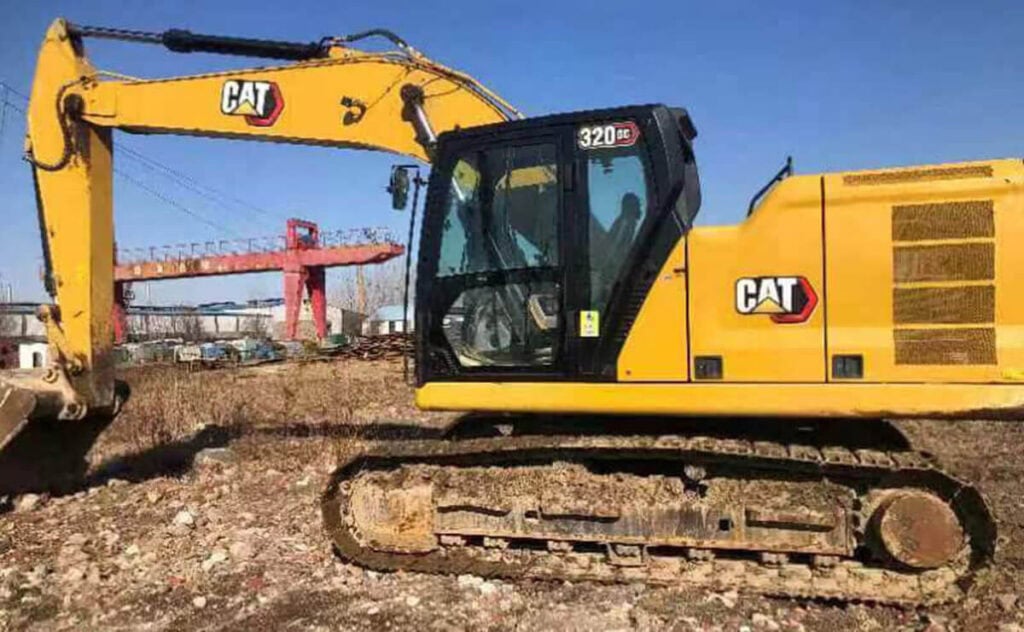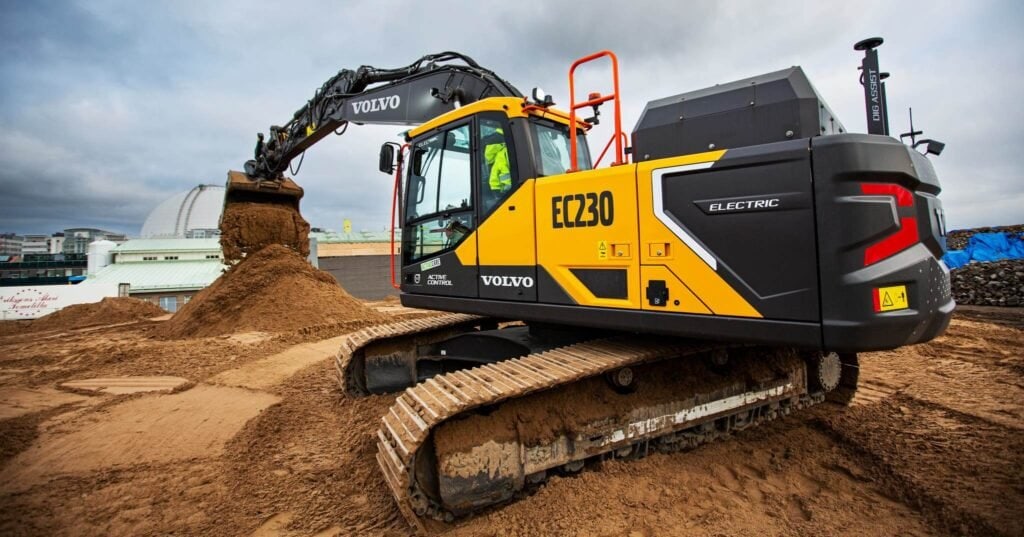Confused by all the different excavator types? Choosing the wrong one can waste time and money. Don’t worry—we’ll help you make the right decision quickly and clearly.
Экскаваторы come in various types, including crawler, wheeled, suction, dragline, and backhoe models. Each suits specific jobs based on terrain, size, and task. To choose the right one, match the excavator type to your site conditions, project requirements, and budget for best efficiency.
Now, let’s dive into each type in detail so you can make a smarter buying decision.

What Are the Main Types of Excavator Used in Construction?
Excavators are critical to construction, but not all are created equal. There are several different types of excavator machines designed to meet specific operational needs, terrains, and budgets. Understanding the names, what they do, and what they are designed for could save you a ton of money and time.
There are several main types of excavators: crawler excavators, wheeled excavators, suction excavators, dragline excavators, and backhoe excavators. Each type differs in mobility, application, power, and performance. For example, crawler excavators, such as the CAT 336F excavator, are built for heavy-duty work on uneven terrain. Suction excavators are designed for delicate underground work. Backhoe excavators, also known as backhoe loaders, can do it all in tight spaces.
When deciding between the different types of excavators, you have to ask what the project requires. Do you need high reach, deep digging, flexibility, or brute force? Bigger models, like the CAT 390F, are perfect for larger-scale infrastructure work, while bobcat mini excavator sizes or the CAT 308 excavator are perfect for residential and landscaping work. Always consult an excavator size guide or excavator size comparison chart so you don’t overspend or undersize for your needs.

Which Type of Excavator Is Best for Small Construction Sites?
Smaller construction doesn’t mean less complicated. If anything, working in tight spaces like urban areas means you need to have precise equipment and be smart about which machines you choose. This is where compact excavators (also called mini excavators) shine.
The best excavators for small construction areas are mini-excavators, compact wheeled excavators, and backhoe excavators. Their small footprints enable them to navigate in tight quarters while still providing the power you need. For example, Bobcat mini excavator sizes are perfect for urban or landscaping work. Similarly, the CAT 306 specs offer a great combination of power and a smaller size.
Backhoe excavators are also popular because they do two jobs—they dig with the rear bucket and load with the front bucket. These machines are also known under backhoe names, as well as types of backhoe loader, and they give you great value since you’re getting two machines in one. Additionally, smaller models typically come with different types of excavator attachments like grapples and trenchers, allowing you to do even more with your machine.
So, if your jobsite is limited in space, prioritize maneuverability and multi-functionality. Explore the different types of excavator buckets to suit your digging or lifting tasks while remaining within your size limitations.

How to Choose the Right Type of Excavator for Your Project?
Picking the right excavator for the job isn’t just about the size of the equipment or the brand. It’s about making sure the machine works for your environment, your task, and your goals. If you get that wrong, not only can you delay your work and be less efficient, but you could also damage the machine.
To determine which excavator to choose, think about your soil and site conditions, digging depth requirements, ground conditions, and how much you need to lift. I watched a hydraulic excavator how it works guide to help me understand how to match up the specs with what the thing can do. We even used an excavator size guide to pick the right size for the job we needed done.
For instance, are you working in softer soil? You’re going to get a crawler excavator. Do you need to move from place to place on the roads? Then, a wheeled excavator is your pick. Do you not have a lot of money, but you’ve got a pretty heavy-duty job and you need something serious? Then, look for a reliable used cat excavator for sale. Maybe a CAT excavator 320? That’s what a lot of guys go to.
Don’t forget about the different types of excavator attachments. A machine that can switch between a bucket, an auger, a breaker, or the different types of excavator bucket teeth can do all these different tasks and make your fleet more versatile and cost-effective.

What Are the Pros and Cons of Wheel vs. Crawler Excavators?
That’s a huge one. This is probably the most critical one, especially when it comes to a contractor. The speed and mobility versus stability and balance and what you pick has a huge impact on your productivity, your safety and even your costs when it comes to wear and tear.
If I need to get from place to place on hard surfaces or in an urban environment, then I can’t be a crawler because they’re too slow. I need to be a wheeled excavator. But if I need some serious digging power, I’m probably not going to be able to get away with a wheeled excavator because they really can’t handle rough terrain quite as well. So, I’m looking at one of the crawler excavators like the ones КОТ or Komatsu make.
The pros of wheeled excavators are that they’re faster, they’re more fuel-efficient, and they’re easier to transport. The downside is that they lack the traction and the ground support you need on muddy or uneven terrain. When you get into the crawler types like the CAT 320 or the CX130B, they can handle hills, slopes, and loose soils a lot better.
It depends on your project and your site. If you are doing a long-distance job or multiple small projects in multiple different locations, you’re probably going to want to go with wheeled. If you’re mining or excavating a hillside, you’re going to want to go with a crawler. Always consider your project scenarios and your site before making your decision.

What Attachments Are Available for Different Excavator Types?
The great thing about modern excavators is their versatility. With all the different excavator attachments, one machine can do a thousand different things.
Some of the attachments you have for an excavator include buckets, breakers, augers, grapples, compactors, and thumbs. There are different kinds of teeth you can get for your excavator bucket—rock teeth, clay teeth, and general-purpose teeth. All of these different attachments are how you turn this one machine, this one standard machine, into a machine that can do a thousand different things.
For example, with dragline excavators, they use these long-boom buckets and they do dredging with them. Backhoes use digging buckets and trenchers. They use them to dig and also to lay pipe, and that kind of stuff. Suction excavators come with vacuum systems to do underground pipe locating and that kind of stuff. There are all kinds of different attachments for them.
They have a huge range of attachments based on that particular model, like the CAT 336F excavator specs, or the CAT 390F. Matching the right tools for the right job increases your return on investment significantly. And when you’re looking at a CAT excavator for sale (new or used), think through what kinds of attachments you might want to use.

Why Used Excavators Are a Cost-Effective Choice?
For people who are trying to keep expenses down, or you’re just getting started, the second-hand market offers a lot of value, especially if you’re buying from a supplier who did a good job of inspecting it and can stand behind it.
It depends on your situation, but a used excavator can be a great way to save money. The payback is quicker in many cases, and it’s a great way to expand your capabilities, whether you’re moving to a different market or just trying to keep your costs down as you get started. CAT, JCB excavator, and Komatsu, they’re all known for being very durable machines, perfect candidates for the used market.
For instance, a used Cat excavator 320 still provides excellent performance while costing much less than a new one. Add in the lower depreciation and easier financing, and the advantages become obvious.
A good supplier will give you a pre-purchase inspection across the board from the hydraulic system to the undercarriage, to the engine health, to the controls. You have to check the capacity of the excavator per hour to estimate the productivity.

What Factors Affect the Pricing of Used Excavators?
All used machines aren’t priced the same. There are several key variables involved in deciding whether a used excavator is a good deal or a lousy one.
The price of used excavators depends on the brand, model, year, how many hours it’s been operating, the maintenance history, and the attachments that come with it. Known brands of excavators, such as CAT or Komatsu, tend to hold their value better. For example, Cat 336F excavator specs carry a premium due to the power and reliability they deliver.
Cost may also differ in terms of market demand. If you’re working during a construction boom, you’re going to pay more, and you’re going to have fewer options. If you’re exporting to regions of the world that are experiencing high demand, such as Peru or the Middle East, figure out what you’re going to need and buy early because you don’t want to last-minute price shop when everything’s at a premium. Don’t forget to account for the value of any types of excavator buckets that are included with your purchase—the attachments can make a significant difference in the overall amount you’ll spend.

How to Inspect a Used Excavator Before Purchase?
When buying used machinery, inspection is everything. Don’t buy off photos. Don’t buy off a spec sheet. You need to know.
Inspect engine health, hydraulic function, wear on the tracks, how precisely the controls respond, and the working condition of the cabin electronics. Look at the parts of the excavator to see if you can find signs of rust, leaks, or patch repair. How many hours it’s been run is a big question. If at all possible, verify this with a third-party inspection.
If you don’t understand how a hydraulic excavator operates, bring a technician with you. Don’t overlook the different types of attachments that are included, such as thumbs or tilting buckets.
A lot of experienced importers will use an excavator size comparison chart to make sure the machine specs match the job site’s demands. Ask for videos of the machine operating so you can see how it really performs.

Where to Find Reliable Used Excavator Suppliers?
Knowing where to buy it is just as important as knowing what to buy. If you pick the wrong place and the communication is poor or they’re dishonest, it can cost you not only in terms of money, but they can also wreck a project timeline.
Alibaba, Made-in-China, and Google are good places to start. Check the reviews, how long they’ve been in business, and their export record. As I mentioned earlier, a name like ХИОСЕН with 15 years of experience is a solid bet for finding a good sourcing supplier with good communication.
You’ve got to make sure that they have inspection reports for the machines, the names of the excavators, the export documents, and after-sales support. The better the relationship you have with the supplier, the easier the logistics, the quicker the shipping, and the fewer surprises you’ll have.
Also, watch out for suppliers that don’t understand the different types and sizes of excavators. If they can’t explain to you when and why you would use the different types of excavation machines or the different types of digging options, be careful.

What’s the Best Way to Import Used Excavators from China?
Now that you’ve found the machine, how do you get it here with no trouble and without spending more than you need to? Let’s talk about how to import a used excavator from China. Once you’ve chosen the machine, here are the steps you’ll take to bring it in: confirm the specifications, finalize your payment, arrange for shipping, clear it through customs, and get it delivered. Make sure you choose an exporter with experience who knows how to get it through the red tape in your country.
If you’re shipping LCL or FCL, make sure you use the correct one for the machine size. Look up the dimensions of the container and make sure it matches the size of the diggers based on the size guide. Get the complete invoice, bill of lading, and a product certificate to go with it. Also, make sure you understand the incoterms, whether it’s FOB or CIF, because it can affect your overall cost. Find logistics agents who understand machinery and confirm that the insurance coverage is going to protect you if something goes wrong. Your supplier can help walk you through all of that.
Краткое содержание
Still not sure? Contact us, and we can help you figure out exactly which one to get for your upcoming project. We’ll help you make smarter decisions to make more money.